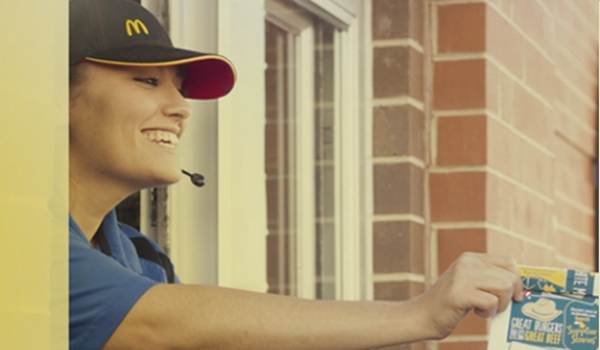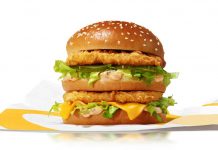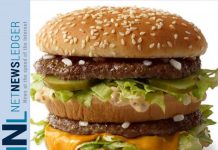
THUNDER BAY – Did you ever want a hamburger during a thunderstorm, but you don’t want to go outside and get wet? We know the feeling.
Thanks to the drive-thru window, McDonald’s’ customers can order and pick up a delicious Big Mac and fries in the rain and never feel a drop.
Sunday, July 24, was National Drive-Thru Day. And there’s no better way to celebrate than to look a bit more closely at the invention of a food-ordering system that changed the way we eat in America – and across the world.
Drive-thru windows let customers stay in their cars, place their orders into a speaker system, and “move ahead to the next window” to pay and pick up their food. Drive-thru windows helped put the “fast” in fast food – and sparked a business revolution.
Approximately 70 percent of McDonald’s’ U.S. sales now come from drive-thru windows. Today drive-thru windows and the Golden Arches are as much a part of the American way of eating as a fork and a knife.
But for the restaurant company’s first 20 years, this wasn’t the case.
In fact, McDonald’s wasn’t even the first restaurant to have a drive-thru window, and originally, they weren’t even going to call it that! But McDonald’s took a good idea, made it better – and took it nationwide in a way no other restaurant company could – or did.
McDonald’s founder Ray Kroc wanted the drive-thru windows to be called The Take Home Window. It was only through trial and error, careful planning, and strategic choices that McDonald’s created a drive-thru window like no other.
It all started in 1974. A regional manager in Dallas had seen the success of drive-thru windows at competing chains in Oklahoma City, and he made it his mission to get the local McDonald’s up to speed.
Around the same time, McDonald’s was undergoing a major remodeling of the restaurants’ look, going from red-and-white tile to the classic mansard roof with inside seating. With permission from the higher ups, the first drive-thru window was designed, complete with McDonaldland characters, a life-sized statue of Ronald McDonald, and a speaker and microphone for ordering.
Murmurings about the upcoming changes at the Oklahoma location spread throughout the company. Soon the first McDonald’s drive-thru window opened in Sierra Vista, Arizona on January 24, 1975.
The Sierra Vista McDonald’s was close to Fort Huachuca Army Base, so you’d think that flocks of hungry soldiers would be lining up at the counter for juicy hamburgers. The opposite happened. Sales were declining because the soldiers had received a standing order forbidding them from wearing their fatigues in public. They couldn’t go inside and grab a burger quickly while in uniform.
This turned out to be a blessing in disguise.
To solve this unanticipated problem, McDonald’s franchisee David Rich installed a sliding window into the wall so soldiers and all customers could order and pickup food without leaving their cars.
Rich’s move “shows the entrepreneurial spirit so many franchisees have,” says Michael Bullington, McDonald’s Corp.’s archivist.
The company may be on the Fortune 500 list and have over 35,000 restaurants in more than 100 countries, but the location owners are “independent business people, too. They’re competitors and they want to make sure that they fulfill customer needs,” he explains.
Soon after, on April 5, 1975, McDonald’s opened the drive-thru window at the Oklahoma City restaurant on Pennsylvania Avenue. Sales rose by 40 percent within two months and there was no turning back.
By the end of 1979, nearly 2,700 McDonald’s restaurants in the U.S. out of the nearly 5,000 total at that time, had drive-thru windows. More than half of the McDonald’s restaurants had incorporated drive-thru windows in a five-year period.
Just as McDonald’s chefs never stop innovating in the kitchen, the restaurants’ Owner/Operators never stop inventing and implementing new design and technology developments for the drive-thru. Why would they settle on something great when it can be made even greater?
“McDonald’s takes the time to make sure they get it right,” says Bullington. And not only has their dedication paid off within the company, it’s also benefited competitors who’ve adopted the technological advancements first seen on McDonald’s turf.
Bullington uses the second drive-thru window, which was added in 1978, as an example: Having two windows where orders can be placed and paid at one, and customers receive the order at the other, speeds up ordering even more.
Some additions to the drive-thru windows are subtle, but just as crucial. Have you ever wondered why the order taker confirms your order at the order screen, then again when taking payment, then tells you what they’re giving you as they hand it over from the window?






